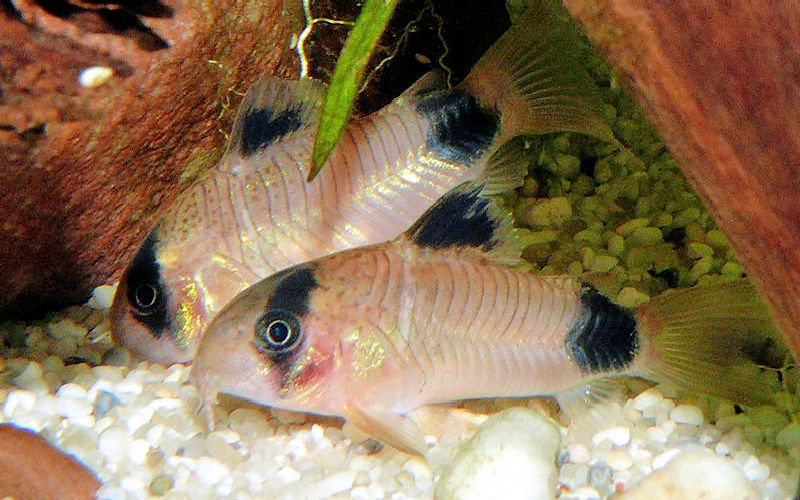The panda cory, or the panda catfish, is a South American species of catfish with a black and off-white coloration pattern similar to a giant panda. Generally peaceful and social, panda corys can be a good addition to a smaller freshwater aquarium. Panda Cories are EXCELLENT TANK-MATES for all Apistogramma aquariums.Species OverviewCOMMON NAMES: Panda catfish, panda cory, panda corydorasSCIENTIFIC NAME: Corydoras panda ADULT SIZE: 2 inches (5 cm)LIFE EXPECTANCY: 10 yearsCharacteristicsFamilyCallichthyidaeOriginPeru; Ucayali river systemSocialPeaceful, schooling fishTank LevelBottom-dwellingMinimum Tank Size10 gallonDietOmnivoreBreedingEgglayerCareIntermediatepH6 to 7Hardness2 to 12 dGHTemperature68 to 77 F (20 to 25 C)Origin and DistributionThis popular Corydoras (cory) species originates from Peru, where it is found in the Ucayali river system, the main headwater of the Amazon River. First collected by H.R. Richards in 1968, the species was not given its name until three years later when it was assigned the name corydoras panda by Nijssen and Isbrücker. The name was given in honor of the giant panda of China, which has a white body with black markings over the eyes and extremities, which are mirrored in this attractive cory.The region from which the panda cory originates is known for its blackwater conditions. The water is on the acidic side and quite soft due to a lack of minerals. Additionally, these waters are a bit cooler than other tropical areas, running in the mid to low 70s on average. When initially introduced to the aquarium hobby, specimens were wild-caught, causing them to be rather expensive to purchase. Eventually, captive breeding programs greatly reduced the price, and as a result, the species has become not only quite inexpensive but also hugely popular.Colors and MarkingsThe body of the panda cory is off-white to faint pink in color, with three prominent deep black markings. The first begins at the top of the head and covers the eyes, much like the black markings around the eyes of a giant panda. The second black marking covers the dorsal fin, and the third is at the base of the tail, known as the caudal peduncle. The size of this third spot at the base of the tail varies and has given rise to the big-spot and small-spot morphs of this fish, each being named for the size of the tail spot.Like other members of the cory family, this fish has two rows of overlapping bony plates known as scutes, rather than scales. Panda corys have three sets of paired barbels, as well as several sharp barbs that serve as a defense mechanism. One barb is located under each eye, another in front of the dorsal fin, and another on the adipose fin. Adults can grow up to two inches in length, but quite often they remain smaller. Just contact me. At Bobs Cory Castle - WE SELL CUTE!
top of page
SKU: 0012
$79.00Price
No Reviews YetShare your thoughts.
Be the first to leave a review.
RELATED PRODUCT
bottom of page













